Pressa per compresse , un'attrezzatura di produzione molto importante nel processo di dosaggio solido, è ampiamente utilizzata nell'industria farmaceutica. RichPacking è un produttore leader di macchinari per il settore farmaceutico e il confezionamento in Cina. Con oltre 30 anni di esperienza, in questo articolo forniremo un'introduzione completa e approfondita alle comprimitrici, sperando di aiutarvi a comprendere appieno il loro funzionamento.
UN macchina per la pressatura delle compresse è un dispositivo meccanico in grado di pressare polveri, granuli, pellet o miscele di questi in forme delle stesse dimensioni. Le forme che possono essere pressate includono forme rotonde, romboidali, ad anello o altre forme irregolari; è possibile realizzare anche compresse bicolore a doppio strato, compresse tricolore a tre strati e altre compresse multistrato, con ogni strato distribuito uniformemente. La forma finale della compressa si ottiene personalizzando diversi stampi. Molti utenti hanno anche bisogno di presentare il LOGO o la stampa della propria azienda sulla compressa, che può essere ottenuta anche tramite stampi personalizzati.
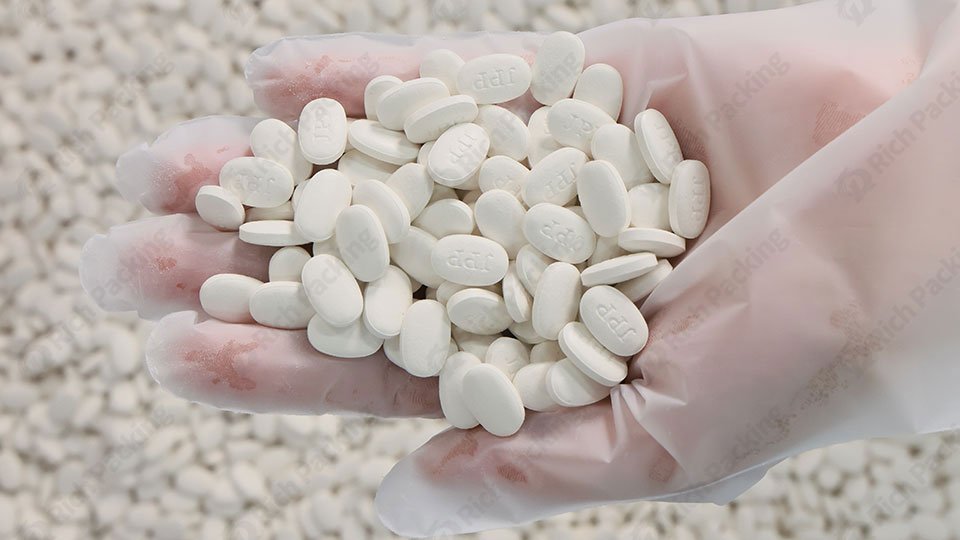
La storia più antica delle presse per compresse risale agli inizi del XIX secolo, ma le prime compresse venivano prodotte esclusivamente a mano, ovvero venivano pressate a mano utilizzando semplici strumenti. Questo metodo è molto laborioso, la resa è molto bassa e la forma e il peso delle compresse non possono essere mantenuti stabili.

Nel 1854, un americano di nome Ezra Perry inventò una comprimitrice manuale e ne richiese il brevetto. Il processo di lavorazione generale prevede l'aggiunta manuale di polvere, la pressatura manuale e la successiva produzione manuale delle compresse. Sebbene l'intero processo debba essere eseguito manualmente, ha già aperto la strada alle comprimitrici a struttura meccanica.
Nel XX secolo, dopo le due guerre mondiali, con il progresso della scienza e della tecnologia e lo sviluppo dell'industria farmaceutica, si svilupparono anche le comprimitrici farmaceutiche. La comprimitrice rotativa fu inventata per la prima volta in Europa e l'efficienza produttiva fu notevolmente migliorata. Le funzioni aggiuntive divennero sempre più numerose, come il sistema di alimentazione automatica forzata e il sistema di protezione da sovraccarico.
Sebbene il principio di funzionamento più basilare della comprimitrice non sia cambiato dalla sua invenzione, con l'ingresso nel XXI secolo le funzioni ausiliarie sono diventate sempre più intelligenti. Il sistema di espulsione automatica degli scarti, il sistema di controllo della pressione, il sistema di rilevamento della durezza e un PLC più potente consentono alla macchina di raggiungere una produzione continua, stabile e ad alta velocità.
Dopo aver compreso la storia dello sviluppo della pressa per compresse, diamo un'occhiata più approfondita al principio di funzionamento della pressa per compresse.
Il principio di funzionamento di una comprimitrice può essere riassunto in tre semplici fasi. Di seguito sono riportate le fasi specifiche del principio di funzionamento di una comprimitrice: alimentazione, pressatura e compressione.
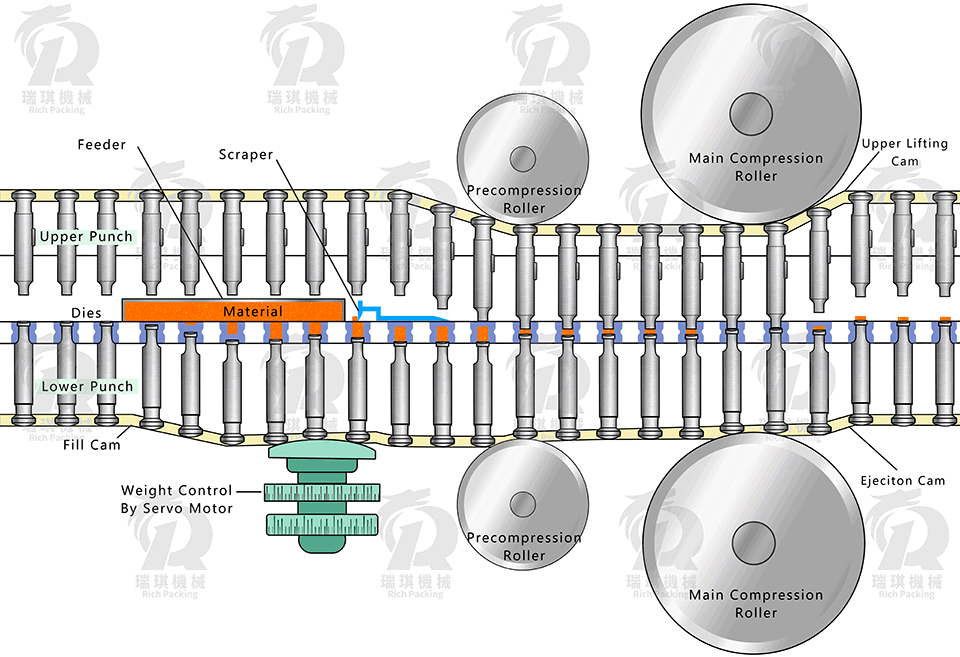
(1)Alimentazione: Aggiungere materiali in polvere o granulari nella posizione di formatura dello stampo centrale della comprimitrice.
(2)Premendo: Il punzone superiore e quello inferiore pressano con forza la polvere, i granuli o la miscela riempiti nello stampo trasformandoli in compresse.
(3)Scarico della compressa: Dopo aver premuto la compressa, questa viene espulsa dallo stampo.
Da quanto detto sopra, sappiamo che il principio di base della comprimitrice è in realtà molto semplice. Le sue tipologie principali possono essere suddivise in comprimitrici manuali, comprimitrici a punzone singolo, comprimitrici a cestello e comprimitrici rotative.
Si tratta di uno strumento che utilizza la forza manuale per pressare le compresse e l'intero processo viene completato manualmente. Si aggiunge manualmente la polvere, si pressa manualmente e infine si estraggono manualmente le compresse pressate. Questo è il tipo più elementare.
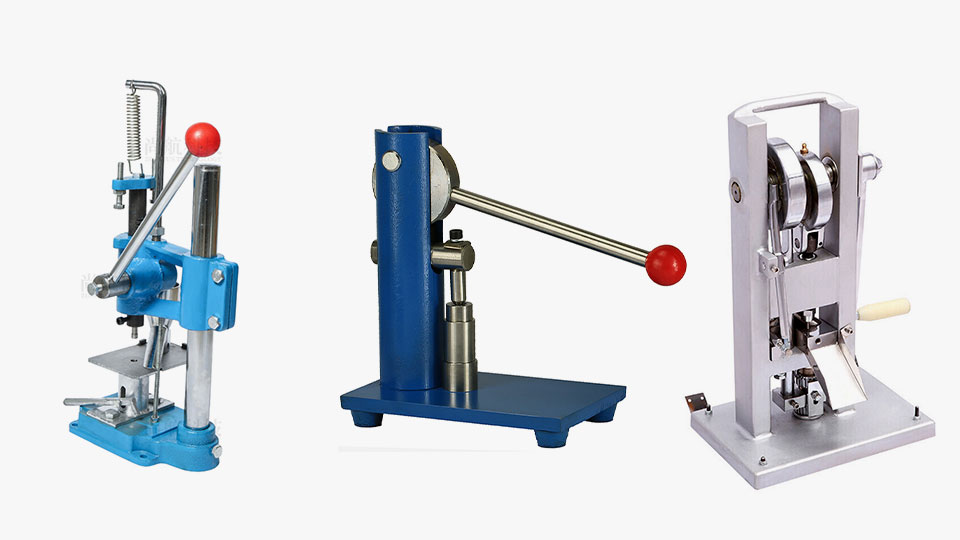
Si tratta di una comprimitrice molto piccola, dotata di una sola stazione di pressatura, che ne riduce notevolmente l'efficienza produttiva. Tuttavia, occupa poco spazio, è semplice da usare e manutenere ed è adatta alla produzione su piccola scala in laboratori tradizionali, farmacie o aree arretrate.
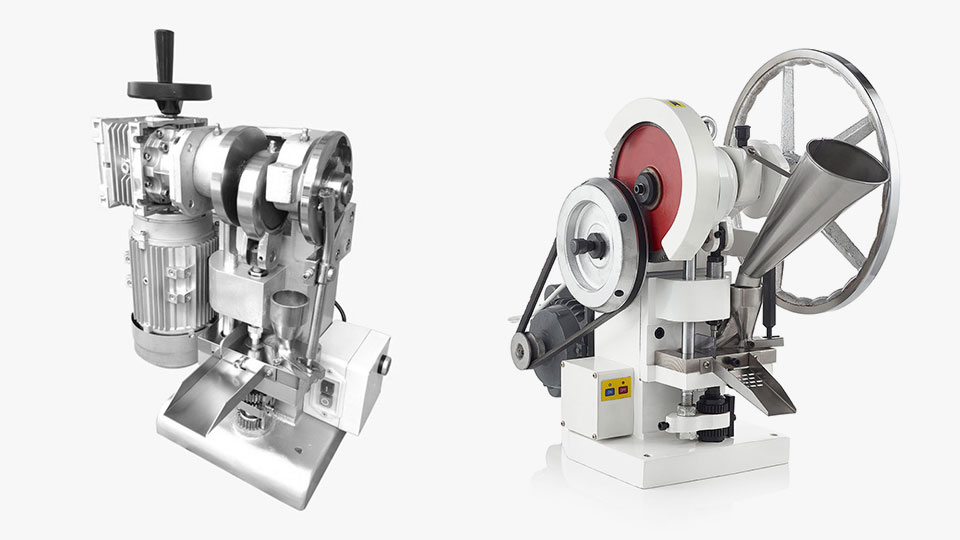
La parte di trasmissione di questa comprimitrice è simile a un cesto di fiori, da cui prende il nome. Viene solitamente utilizzata per pressare compresse di grandi dimensioni, come i blocchi di esche per pesci. Poiché è presente una sola stazione di pressatura, la produttività della comprimitrice a punzone a cesto di fiori non è elevata. I suoi vantaggi sono l'elevata pressione di pressatura, la possibilità di impostare stampi molto grandi e la possibilità di formare compresse di grandi dimensioni. Poiché la comprimitrice a punzone a cesto di fiori non può soddisfare i requisiti di produzione GMP, con lo sviluppo della scienza e della tecnologia e il rigore degli standard di produzione in vari paesi del mondo, questo modello non può più essere utilizzato nell'industria farmaceutica, dove la domanda di compresse è in forte crescita.
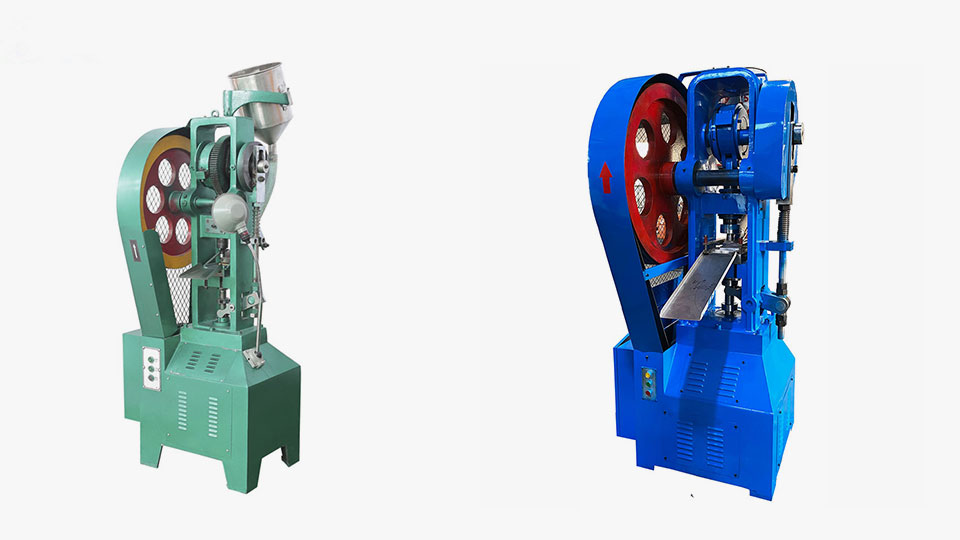
La comprimitrice rotativa è attualmente la più comunemente utilizzata, utilizzata principalmente per la produzione di massa nei settori farmaceutico, alimentare, sanitario e chimico. La struttura principale comprende una tavola rotante, più set di stampi, una struttura di trasmissione e un sistema di controllo.
Durante il processo di lavorazione, più set di stampi ruotano sulla tavola rotante. Grazie al movimento orizzontale dei punzoni superiore e inferiore sulle guide, quando ruotano in una determinata posizione, i punzoni superiore e inferiore pressano il materiale in compresse nello stampo centrale. Questa modalità di funzionamento rotante rende l'efficienza produttiva molto più elevata rispetto ad altri modelli. Aumentando il numero di stampi e la velocità della tavola rotante, è possibile ottenere una maggiore efficienza produttiva.
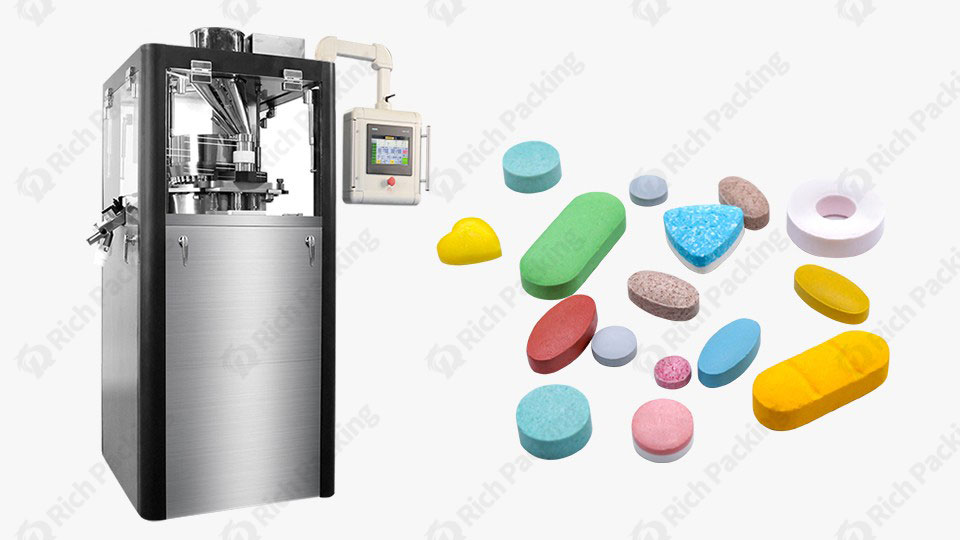
Oltre all'elevata produttività, grazie alla programmazione intelligente del sistema PLC, la comprimitrice rotativa può essere configurata con funzioni aggiuntive in base alle effettive esigenze, ottenendo i vantaggi di elevata intelligenza, praticità e praticità. Senza la necessità di apportare complesse modifiche all'architettura della macchina, impostando in modo razionale i parametri sull'interfaccia HMI, è molto semplice regolare lo spessore, la durezza e altri parametri delle compresse.
L'attuale pressa rotativa per compresse è dotata di una varietà di interfacce dati, che trasmettono dati tramite cavi di rete, interfacce TYPE-C e interfacce USB per caricare e scaricare dati, fornendo un solido supporto di base alle aziende farmaceutiche per raggiungere gli aggiornamenti industriali 4.0.
Le comprimitrici più diffuse continuano a essere utilizzate nell'industria farmaceutica, pertanto l'efficienza produttiva e la precisione sono le principali tendenze di sviluppo e le comprimitrici rotative rappresentano la giusta direzione di sviluppo del settore.
(1)Intelligenza: Lo sviluppo dell'intelligenza artificiale oggi guida le apparecchiature industriali verso un'automazione matura. La progettazione delle presse per compresse richiederà una programmazione più avanzata, con l'obiettivo di migliorare la qualità dei farmaci e l'efficienza produttiva.
(2) Efficienza produttiva: In futuro, il concetto di salute continuerà a diventare sempre più popolare e la domanda di prodotti e compresse per la salute aumenterà, quindi la produzione di apparecchiature farmaceutiche dovrà essere sempre più efficiente. Le comprimitrici che possono essere utilizzate per una produzione continua e su larga scala rappresentano importanti direzioni di ricerca e sviluppo.
(3) Peso preciso della compressa: Lo sviluppatore Lo sviluppo di formule farmaceutiche consente un'assunzione più chiara di prodotti medici e sanitari, quindi il peso di una singola compressa e la durezza della compressa che influisce sul rilascio prolungato della compressa devono essere a un livello molto stabile, quindi una comprimitrice rotativa con rilevamento del peso della compressa e rilevamento della durezza è un dispositivo chiave in futuro.
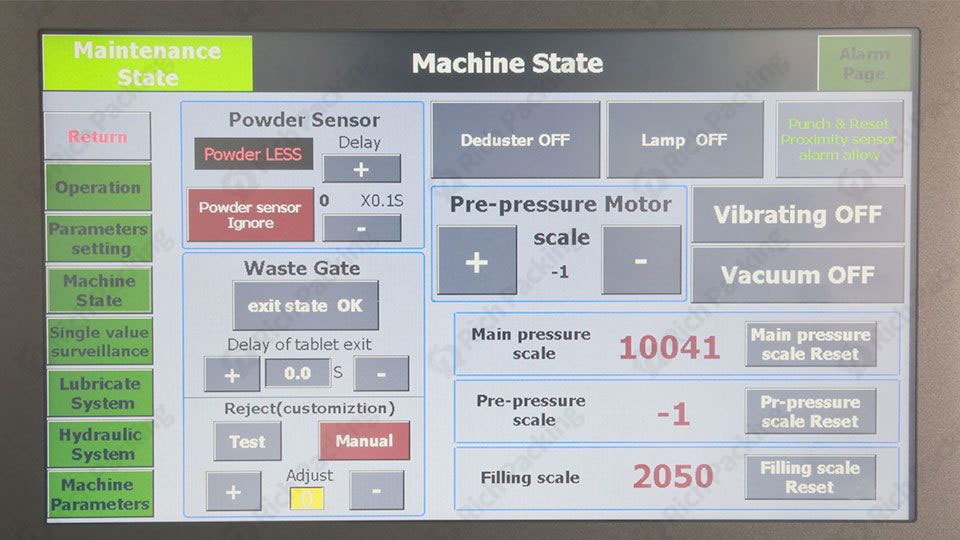
In generale, le comprimitrici sono apparecchiature importanti nei settori farmaceutico, alimentare, sanitario, chimico e in altri settori. È importante comprendere appieno il principio di funzionamento e le tipologie di comprimitrici in anticipo, in modo da sapere a cosa prestare attenzione al momento dell'acquisto. Spero che questo articolo possa esservi utile. Se siete interessati a saperne di più sulle comprimitrici, vi invitiamo a... contattaci Saremo lieti di fornirti ulteriore assistenza.